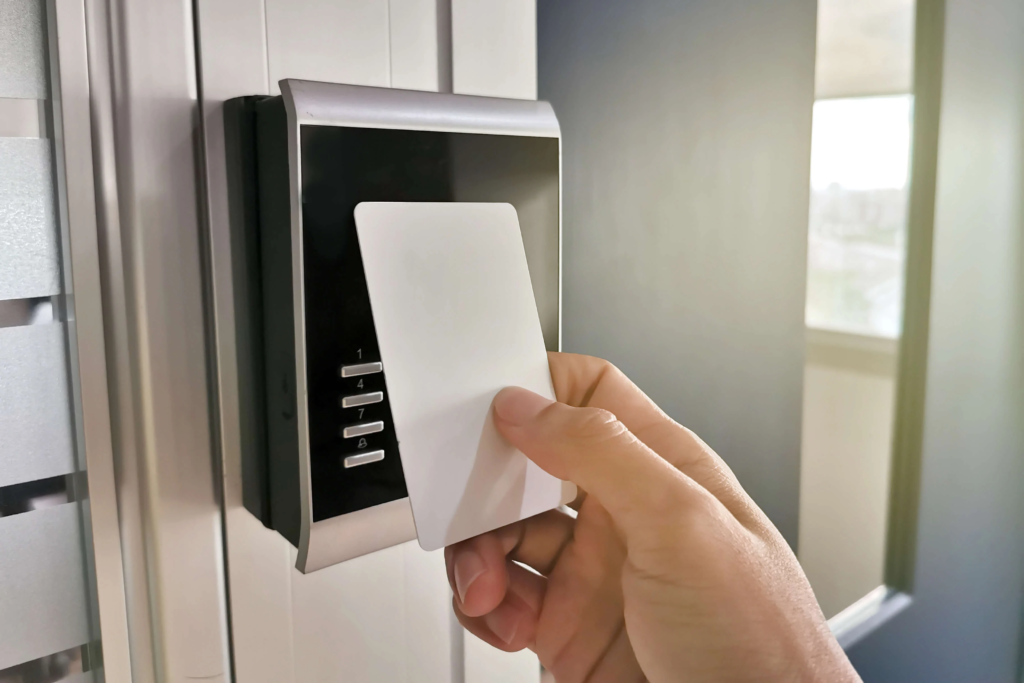
What Makes HID Proximity Card More Secure Than Traditional Keycards or Magstripes?
Security is a top priority in today’s access control systems. HID Proximity Card have emerged as a more secure solution compared to traditional keycards or magstripes. Their unique features provide enhanced protection against unauthorised access, fraud, and hacking attempts.
Understanding Traditional Keycards and Magstripes
Traditional keycards, such as magstripe cards, store data on magnetic stripes embedded within the card. These cards are easy to duplicate, as the data is unencrypted and can be copied with basic technology. A magstripe can easily be cloned, making it a prime target for fraud. Keycards that rely on a fixed code are also vulnerable to being replicated or hacked. These limitations make traditional cards less secure, especially in high-security environments.

How HID Proximity Card Works
HID Proximity Cards, unlike their traditional counterparts, use RFID (Radio Frequency Identification) technology to communicate wirelessly with card readers. These cards contain a microchip that is activated when they come within range of a reader. Instead of storing static data on the card itself, HID Proximity Cards generate a unique, encrypted signal for each interaction. This ensures that the data transmitted is much more complex to intercept or replicate compared to traditional magnetic stripes or keycards.
Encryption and Authentication
One of the most significant differences between HID Proximity Cards and traditional cards is the level of encryption. With traditional keycards, the information on the magnetic stripe is not encrypted, meaning it can be easily copied. In contrast, HID Proximity Cards utilise encryption protocols, such as 64-bit or 128-bit encryption, making them nearly impossible to clone. The encryption adds an extra layer of security by ensuring that the data exchanged between the card and reader is protected from eavesdropping.

Dynamic Code Generation
Another key feature of HID Prox Cards is dynamic code generation. Unlike traditional cards, which rely on fixed codes, HID Proximity Cards use a rolling code system. This means that each time the card communicates with the reader, it generates a new, temporary code. This dynamic system makes it nearly impossible for someone to copy or reuse the code, as the previous code becomes invalid the moment it is used. It adds a significant layer of security by eliminating the possibility of replay attacks or code interception.
Resistance to Cloning and Duplication
HID Proximity Cards are designed to be difficult to clone. The RFID technology, combined with encryption and dynamic code generation, creates a secure communication channel between the card and reader. Traditional keycards and magstripes, on the other hand, are more susceptible to cloning because their data is unprotected and can be easily copied. This makes HID Proximity Cards a more secure option for environments where unauthorised access can have serious consequences.
-jpg.webp)
Physical Security Features
In addition to the technological advantages, HID Proximity Cards also offer physical security features that make them more tamper-resistant than traditional cards. Many HID Proximity Cards are designed with tamper-evident seals, which clearly indicate if a card has been altered or opened. The cards are durable and resistant to wear, ensuring long-term use without damage or compromise.
Ease of Use and Convenience
While security is paramount, HID Proximity Cards also offer the added benefit of ease of use. Unlike traditional keycards or magstripes, which require physical swiping or insertion, HID Proximity Cards must be in proximity to the reader. This makes access more convenient for users, as they don’t need to physically interact with the card reader. Additionally, since the card does not have to come into direct contact with the reader, the risk of wear and tear is minimised, further enhancing the card’s longevity and security.

Why HID Prox Cards Are a Better Choice for High-Security Environments
In high-security environments, the risk of unauthorised access is high. Whether it’s a corporate office, a government building, or a data centre, protecting sensitive areas is critical. HID Proximity Cards offer an advanced level of security that traditional keycards and magstripes cannot match. With features such as encryption, dynamic code generation, resistance to cloning, and physical security measures, these cards offer a reliable and secure solution for access control. They help prevent unauthorised duplication and reduce the risk of security breaches, making them a superior choice for environments where security is a top concern.
The Superior Security of HID Proximity Card
HID Proximity Cards provide a level of security that traditional keycards or magstripes cannot match. The combination of RFID technology, encryption, dynamic code generation, and physical security features makes these cards significantly more secure against fraud, hacking, and unauthorised access. Whether you’re securing an office building, a hospital, or any high-security facility, HID Proximity Cards are a reliable choice for enhancing security and protecting valuable assets. By upgrading from traditional cards to HID Proximity Cards, businesses and organisations can significantly improve their access control systems and mitigate security risks.


